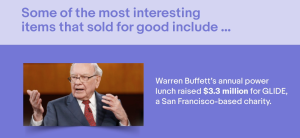Facebook has been in the news a lot lately — and not for good reasons. But the most popular social media platform isn’t going anywhere soon, though, thanks to 1.17 billion active users every month, and 450 million users connected to nonprofit Facebook Pages.
As Facebook Founder and CEO Mark Zuckerberg testified before Congress this week, a panel session during the Nonprofit Technology Conference (NTC) taking place this week at the Morial Convention Center in New Orleans, La., explained how nonprofits can still use the number one social media platform to raise money.
“How to Use Facebook’s Free Fundraising Tools to Drive Donations” (#18NTCfbfundraising) was comprised of panelists Julia Campbell of J Campbell Social Marketing and author of “Storytelling in the Digital Age: A Guide for Nonprofits,” Jennifer Cheang, digital marketing manager at Mental Health America, and Joseph Gallant, individual giving officer for Polaris Project, an anti-human trafficking nonprofit.
Almost three-quarters of Facebook users say they visit the site daily and about half say they visit several times a day, according to the Pew Research Center’s latest findings in “Social Media Use in 2018.” A majority of Americans use Facebook and YouTube but young adults, especially those 18 to 24 years old, are especially heavy users of Snapchat and Instagram, another platform that is owned by Facebook. Other than YouTube, none of the other sites or apps measured in Pew’s survey are used by more than 40 percent of Americans.
Facebook has evolved over the years and become a tool that you can use to help your network fundraise for you. Increasingly, those tools aim for meaningful interactions — within Facebook — including donations through Facebook Payments. Posts that send users to external websites might see decreased reach.
Fundraisers can sync their off-Facebook fundraising efforts to their Facebook Fundraisers and now donate buttons can be found on Facebook pages, Facebook Ads, and even Facebook Live, its video streaming service.
Facebook Payments is available to U.S. charities registered as 501(c)(3) organizations with the Internal Revenue Service (IRS) that have a tax ID number, as well as a bank account registered with a licensed financial services institution.
Information from a daily transaction report would include information on each donation made to an organization, whether through the Donate button or through a Facebook Fundraiser. Fields includes first name, last name, amount donated, and email address (if the donor has shared it). Updated daily reports are made available after 48 hours from the moment a donation was made.
- Some quick tips for success on Facebook included:
- Making clear your funding goal;
- A specific time frame and outcomes;
- Always ask for amounts, specificity is good;
- Visuals always help on Facebook;
- A strong presence and theme; and, of course,
- Always remember to thank people via Facebook.











